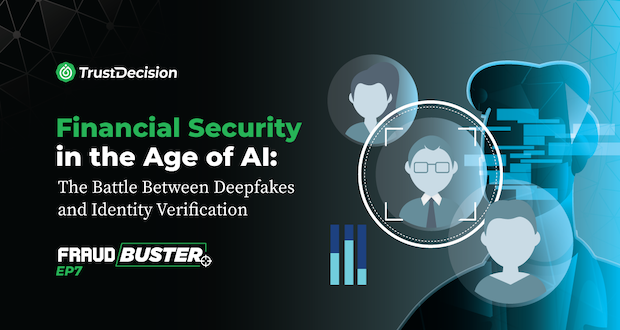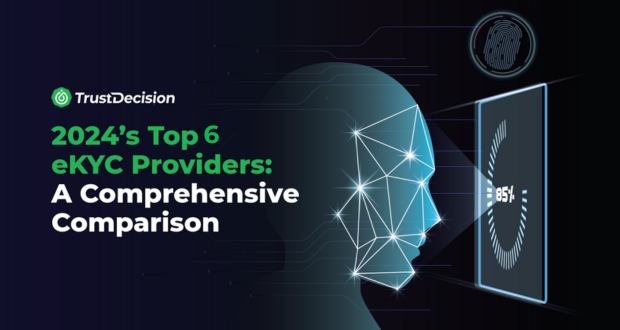Traditional Deepfake Detection Methods
Existing Techniques
AVAD (Audio-Visual Anomaly Detection)
Audio-Visual Anomaly Detection (AVAD) is one of the traditional methods used to identify deepfakes. This technique leverages the synchronization between audio and visual streams in a video. By analyzing the consistency between lip movements and the corresponding audio, AVAD can detect discrepancies that may indicate a deepfake. For instance, if the lip movements do not match the spoken words, it could be a sign of manipulation.
Join-tAV (Joint Audio-Visual Detection)
Join-tAV is another established method that combines audio and visual data to detect deepfakes. This approach uses machine learning models to jointly analyze audio and visual features, identifying inconsistencies that may suggest tampering. By examining both modalities simultaneously, Join-tAV aims to improve the accuracy of deepfake detection compared to methods that analyze audio or visual data in isolation.
Limitations in Addressing Cross-Modal Deepfakes
While traditional methods like AVAD and Join-tAV have shown promise in detecting deepfakes, they face significant limitations, particularly when it comes to cross-modal deepfakes. Cross-modal deepfakes involve manipulations that span multiple modalities, such as altering both the audio and visual components of a video in a coordinated manner. These types of deepfakes are more challenging to detect because they can maintain a high degree of consistency between the manipulated modalities.
Inadequate Generalization
One of the primary limitations of traditional deepfake detection methods is their lack of generalization. These techniques are often trained on specific datasets and may struggle to detect deepfakes that deviate from the patterns seen during training. As a result, they may fail to identify novel or sophisticated deepfake techniques that exploit weaknesses in the detection models.
Sensitivity to Noise
Traditional methods can also be sensitive to noise and other artifacts present in real-world data. For example, variations in lighting, background noise, or video compression can introduce anomalies that may be misinterpreted as deepfakes. This sensitivity can lead to false positives, reducing the reliability of the detection system.
Limited Scalability
Another challenge is the scalability of traditional deepfake detection methods. As the volume of digital content continues to grow, the ability to efficiently and accurately analyze large datasets becomes increasingly important. Traditional methods may struggle to keep pace with the sheer volume of data, leading to delays in detection and response.
While traditional deepfake detection methods like AVAD and Join-tAV have laid the groundwork for identifying manipulated media, they are not without their limitations. These methods often fall short when faced with cross-modal deepfakes, lack generalization, and are sensitive to noise and scalability issues. To address these challenges, more advanced and innovative approaches are needed. In the following sections, we will explore cutting-edge techniques that aim to overcome these limitations and provide more robust deepfake detection capabilities.
Fine-Grained Features for Facial Forgery-Based Deepfake Detection
Formulating Deepfake Detection as Fine-Grained Classification
Deepfake detection, particularly for facial forgeries, can be effectively approached as a fine-grained classification problem. Unlike traditional classification tasks that distinguish between broad categories, fine-grained classification focuses on identifying subtle differences within a specific category. In the context of deepfake detection, this means distinguishing between genuine and manipulated facial features with high precision.
By treating deepfake detection as a fine-grained classification task, researchers can develop models that are sensitive to the minute details and variations that characterize deepfakes. This approach allows for the identification of subtle manipulations that might be overlooked by more general classification methods.
Learning Subtle and Generalizable Features
To effectively detect facial forgeries, it is crucial to learn features that are both subtle and generalizable. Subtle features capture the fine details and nuances that differentiate genuine faces from deepfakes. These features may include slight inconsistencies in facial expressions, unnatural movements, or minor artifacts introduced during the forgery process.
Techniques for Learning Subtle Features
- High-Resolution Analysis: Analyzing high-resolution images and videos allows the model to capture fine details that are essential for detecting deepfakes. High-resolution data provides more granular information, enabling the model to identify subtle anomalies.
- Attention Mechanisms: Incorporating attention mechanisms in the model architecture helps focus on the most relevant parts of the face. By directing the model's attention to critical regions, such as the eyes, mouth, and skin texture, it can better detect subtle manipulations.
- Feature Augmentation: Augmenting the training data with variations in lighting, angles, and expressions helps the model learn robust features that generalize well across different scenarios. This reduces the risk of overfitting and improves the model's ability to detect deepfakes in diverse conditions.
Suppression of Background Noise and Multi-Scale Feature Extraction
Background noise and irrelevant information can significantly impact the accuracy of deepfake detection models. To address this, it is essential to suppress background noise and focus on extracting relevant features at multiple scales.
Suppression of Background Noise
- Region of Interest (ROI) Extraction: By isolating the face from the background, the model can concentrate on the most critical area for deepfake detection. ROI extraction techniques, such as facial landmark detection, help segment the face and reduce the influence of background noise.
- Noise Reduction Filters: Applying noise reduction filters to the input data can help eliminate irrelevant information and enhance the quality of the features extracted. Filters such as Gaussian blur or median filtering can smooth out noise while preserving important details.
Multi-Scale Feature Extraction
Using pyramid networks allows the model to extract features at multiple scales, capturing both fine details and broader patterns. This hierarchical approach ensures that the model can detect deepfakes at various levels of granularity. Incorporating multi-scale convolutional layers in the model architecture enables the extraction of features at different resolutions. By analyzing the input data at multiple scales, the model can identify deepfake manipulations that may be evident at one scale but not at another.
Formulating deepfake detection as a fine-grained classification problem and focusing on learning subtle and generalizable features significantly enhances the model's ability to detect facial forgeries. By suppressing background noise and employing multi-scale feature extraction techniques, researchers can develop more robust and accurate deepfake detection systems. These advancements are crucial for maintaining the integrity of identity verification processes and protecting against the growing threat of deepfakes. In the next section, we will explore the integration of edge and blockchain technologies for deepfake detection, further advancing the state of the art in this field.
Blockchain-Based Deepfake Detection with BFLDL
Integration of Edge and Blockchain Technologies
The integration of edge computing and blockchain technology represents a novel approach to deepfake detection, offering enhanced security, scalability, and efficiency. Blockchain-Based Federated Learning for Deepfake Detection (BFLDL) leverages the strengths of both technologies to create a decentralized, tamper-proof system for identifying deepfakes.
Edge Computing
Edge computing involves processing data closer to its source, such as on local devices or edge servers, rather than relying solely on centralized cloud servers. This approach offers several advantages for deepfake detection:
- Reduced Latency: By processing data locally, edge computing minimizes the time required to analyze and detect deepfakes, enabling real-time detection.
- Bandwidth Efficiency: Edge computing reduces the need to transmit large volumes of data to central servers, conserving bandwidth and lowering operational costs.
- Enhanced Privacy: Processing data at the edge helps protect user privacy by keeping sensitive information local and minimizing the risk of data breaches.
Data Protection and Accuracy Assurance
The combination of edge computing and blockchain technology in BFLDL enhances both data protection and accuracy assurance in deepfake detection. By distributing data across multiple nodes in a blockchain network, BFLDL reduces the risk of data breaches and single points of failure. This decentralized approach ensures that even if one node is compromised, the overall system remains secure. Blockchain technology supports advanced encryption techniques to protect data integrity and confidentiality. Sensitive information can be encrypted before being recorded on the blockchain, ensuring that only authorized parties can access it. Additionally, BFLDL employs federated learning, a machine learning approach that trains models across decentralized devices without sharing raw data. This method enhances privacy by keeping data local while still benefiting from collaborative learning.
In terms of accuracy assurance, blockchain's consensus mechanisms ensure that deepfake detection results are validated by multiple nodes, enhancing the accuracy and reliability of the system. This decentralized validation process reduces the risk of false positives and negatives. The immutable nature of blockchain provides a transparent and verifiable audit trail of all deepfake detection activities, allowing for the verification of detection results and the identification of any discrepancies or anomalies. Federated learning enables continuous updates to the deepfake detection model based on new data from edge devices. This iterative process ensures that the model remains up-to-date and improves its accuracy over time.
The integration of edge computing and blockchain technology in BFLDL represents a significant advancement in deepfake detection. By leveraging the strengths of both technologies, BFLDL offers enhanced data protection, reduced latency, and improved accuracy assurance. This innovative approach addresses the limitations of traditional deepfake detection methods and provides a robust and scalable solution for safeguarding identity verification processes. In the next section, we will introduce TrustDecision's KYC++, a comprehensive identity verification suite that incorporates advanced deepfake detection capabilities to further fortify identity processes.
TrustDecision's KYC++
KYC++ is a comprehensive solution designed to enhance identity verification processes. It goes beyond traditional KYC (Know Your Customer) methods by incorporating advanced features and cutting-edge technologies. This innovative suite is tailored to meet the evolving needs of various industries, providing a robust and reliable framework for verifying identities and safeguarding against fraud and identity theft.TrustDecision's KYC++ offers several key features that set it apart from traditional identity verification solutions.
One of the standout features is device fingerprint technology, which creates a unique fingerprint for each device by considering factors such as hardware specifications, software configuration, and network behavior. This multi-layered security approach helps prevent fraudulent activities by identifying and flagging suspicious devices.
Another critical feature is high data accuracy. KYC++ ensures precise verification results by detecting altered images, including deepfakes and AI-generated content, with exceptional accuracy. This capability is crucial in maintaining the integrity of identity verification processes in the face of increasingly sophisticated manipulation techniques.
Efficiency is another hallmark of KYC++. Users experience quick verification results—typically within one second—without compromising accuracy. The use of advanced OCR technology plays a crucial role in achieving this efficiency, allowing for rapid processing of identity documents.
Additionally, KYC++ boasts global coverage, supporting a wide range of document types (over 12,500), covering 247 countries, and accommodating 138 languages. This extensive coverage ensures that KYC++ can cater to a diverse user base across the globe, making it a versatile solution for international organizations. Finally, compliance assurance is a key feature of KYC++. TrustDecision adheres to stringent privacy regulations such as GDPR and CCPA, ensuring that user data is handled securely and transparently. This commitment to compliance not only protects user privacy but also helps organizations avoid potential legal and financial penalties.
TrustDecision's KYC++ represents a significant advancement in identity verification, combining traditional KYC processes with cutting-edge technologies to deliver a comprehensive and reliable solution. With its robust components and key features, KYC++ enhances security, accuracy, and efficiency in identity verification processes, helping organizations safeguard against fraud and identity theft. In the final section, we will recap the importance of deepfake detection and TrustDecision's role in fortifying identity processes.
Conclusion
The importance of robust deepfake detection methods cannot be overstated in today's digital landscape. TrustDecision's KYC++ represents a significant advancement in identity verification, combining traditional KYC processes with innovative technologies to deliver a comprehensive and reliable solution. By fortifying identity processes with advanced deepfake detection capabilities, TrustDecision helps organizations safeguard against fraud and identity theft, ensuring the authenticity of digital interactions and maintaining trust in an increasingly digital world.

.jpeg)







.jpeg)




